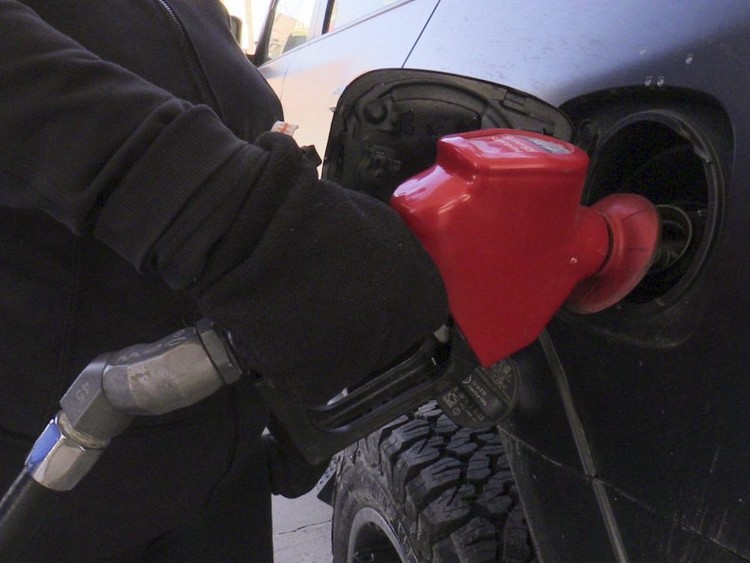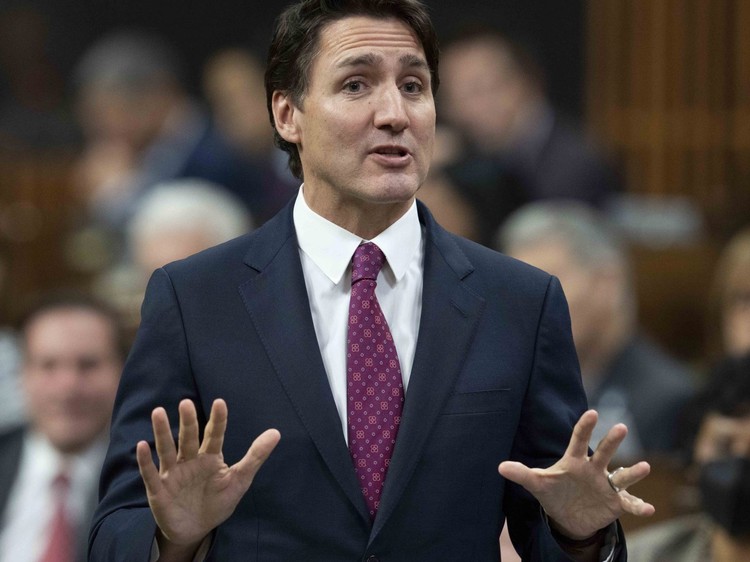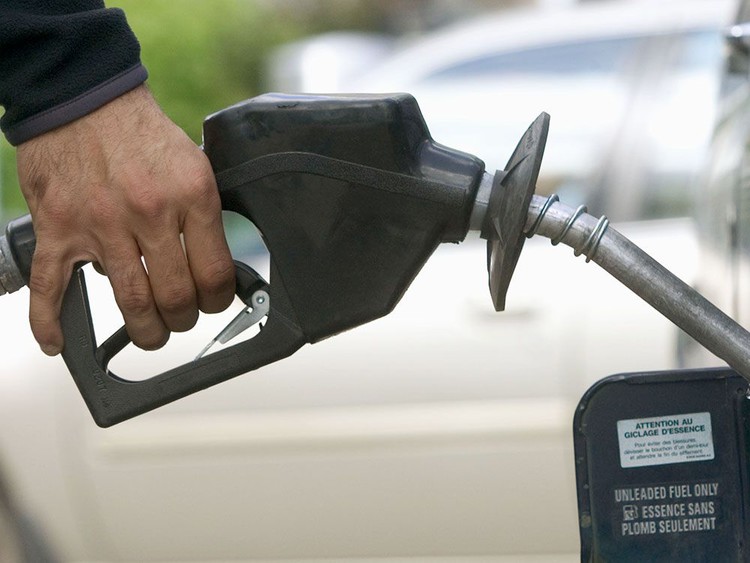Which is why turdOWE is doing everything he can to destroy the oil industry in the west.Energy is power. No energy, no power to wield.
April Fools!! Here's your Carbon Tax F#ckers!!!
- Thread starter Ron in Regina
- Start date
You are using an out of date browser. It may not display this or other websites correctly.
You should upgrade or use an alternative browser.
You should upgrade or use an alternative browser.
The entire fucking country.Which is why turdOWE is doing everything he can to destroy the oil industry in the west.
It is not only Alberta Premier Danielle Smith who is taking a strikingly aggressive attitude towards the Trudeau government’s persistent hostility to the oil and gas industry — Scott Moe of Saskatchewan has also stepped into the ring. Both are plainly, without apology, saying “no” to net-zero, carbon taxes and hymns to windmills.
The carbon-tax zealots in Ottawa are not accustomed to strong push-back, even from those western provinces most injured by federal policy. Indeed, when the NDP were in power in Alberta, the premier had a cosy relationship with Prime Minister Justin Trudeau. This was the period when, for a while, the line out of Ottawa was: governments can grant permits, but only communities can grant permission.
Apart from evacuating all substance and meaning from what a “permit” actually is, and apart from also being one of those Trudeau platitudes we’re all are so tired of, this was a position meant to signal to protesters, NGOs and the incessant green doom-mongers that they should keep up their efforts to stall, halt and interfere in every conceivable way with every new or ongoing oil and gas project.
Smith, before becoming premier and now after entering office, has done more than signal that her province will fight the torrent of decrees and regulations coming from Ottawa. But as mentioned, the country has also heard from Saskatchewan’s premier that obliging federal interference within provincial jurisdiction is no longer in the cards.
Not content with degrading the economy of Alberta, the federal government has also announced it wants to reduce fertilizer usage on Canadian farms. Premier Moe’s response to that, to quote another journalist’s paraphrasing, was: “To hell with that.”

 apple.news
apple.news
Saskatchewan and Alberta are now in league to challenge and resist the overwhelming determination in present-day Ottawa, under the clarion call of “net zero,” to steamroll and eventually kill the oil and gas industry — and on the way, brutalize the agricultural industry. From here on in, it’s going to be a fight. As it should be, and as it always should have been.
Policy that emerged from a cadre of green activists should never have been tolerated as an overriding national policy, with the force to downgrade provincial economies — and the national treasury. In its zeal to be a partner of the Intergovernmental Panel on Climate Change and the number 1 servitor of the global warming crusade, Trudeau’s government has, for its full seven years in power, done all it could to gut the natural resources industry.
Natural resources have traditionally (and constitutionally), till green fantasies took over at least, been a matter of provincial rights. What Smith and Moe have made clear is that from here on in, Trudeau’s pursuit of the green agenda, built on a vast intrusion into provincial rights, is going to take a lot more than the federal government simply declaring Canada’s journey to the fabulous state of net zero and the end of oil and gas.
Both premiers have uttered a very interesting truth: that the federal government is a partner, not a ruler, in Confederation. They are also reminding Canadians of the very real dangers of being obsessed with the climate crusade.
A glance at world politics, the grim acceleration of food prices and inflation generally, Europe’s justified anxieties about heading into the coming winter with devastating fuel shortages — all of these are an outgrowth of the blind war on energy resources and the foolish and dangerous conviction that windmills and solar panels can run the modern, high-tech global economy.
The rest at the above link.
The carbon-tax zealots in Ottawa are not accustomed to strong push-back, even from those western provinces most injured by federal policy. Indeed, when the NDP were in power in Alberta, the premier had a cosy relationship with Prime Minister Justin Trudeau. This was the period when, for a while, the line out of Ottawa was: governments can grant permits, but only communities can grant permission.
Apart from evacuating all substance and meaning from what a “permit” actually is, and apart from also being one of those Trudeau platitudes we’re all are so tired of, this was a position meant to signal to protesters, NGOs and the incessant green doom-mongers that they should keep up their efforts to stall, halt and interfere in every conceivable way with every new or ongoing oil and gas project.
Smith, before becoming premier and now after entering office, has done more than signal that her province will fight the torrent of decrees and regulations coming from Ottawa. But as mentioned, the country has also heard from Saskatchewan’s premier that obliging federal interference within provincial jurisdiction is no longer in the cards.
Not content with degrading the economy of Alberta, the federal government has also announced it wants to reduce fertilizer usage on Canadian farms. Premier Moe’s response to that, to quote another journalist’s paraphrasing, was: “To hell with that.”
Rex Murphy: Western premiers finally push back against Trudeau's devastating agenda — National Post
It is so good, finally, to see a real resistance to the green agenda
Saskatchewan and Alberta are now in league to challenge and resist the overwhelming determination in present-day Ottawa, under the clarion call of “net zero,” to steamroll and eventually kill the oil and gas industry — and on the way, brutalize the agricultural industry. From here on in, it’s going to be a fight. As it should be, and as it always should have been.
Policy that emerged from a cadre of green activists should never have been tolerated as an overriding national policy, with the force to downgrade provincial economies — and the national treasury. In its zeal to be a partner of the Intergovernmental Panel on Climate Change and the number 1 servitor of the global warming crusade, Trudeau’s government has, for its full seven years in power, done all it could to gut the natural resources industry.
Natural resources have traditionally (and constitutionally), till green fantasies took over at least, been a matter of provincial rights. What Smith and Moe have made clear is that from here on in, Trudeau’s pursuit of the green agenda, built on a vast intrusion into provincial rights, is going to take a lot more than the federal government simply declaring Canada’s journey to the fabulous state of net zero and the end of oil and gas.
Both premiers have uttered a very interesting truth: that the federal government is a partner, not a ruler, in Confederation. They are also reminding Canadians of the very real dangers of being obsessed with the climate crusade.
A glance at world politics, the grim acceleration of food prices and inflation generally, Europe’s justified anxieties about heading into the coming winter with devastating fuel shortages — all of these are an outgrowth of the blind war on energy resources and the foolish and dangerous conviction that windmills and solar panels can run the modern, high-tech global economy.
The rest at the above link.
If they want their battery powered cars and energy storage the Feds are going to have kiss Sask ass for our lithium and REEs.
Could you imagine an eruption like this in Canada at $50/tonne of Carbon tax it would break the taxpayers
Or pass a law that states “Green” natural resources are no longer the purview of the provinces & become a Federal resource. Sounds far fetched? Open pit Lithium mines for the good of the planet?If they want their battery powered cars and energy storage the Feds are going to have kiss Sask ass for our lithium and REEs.
Roles and Responsibilities of Governments in Natural Resources
Local, municipal, Indigenous, provincial/territorial, and federal governments in Canada all have different powers to manage their respective non-renewable natural and forestry resources.
Fuck that noise.Or pass a law that states “Green” natural resources are no longer the purview of the provinces & become a Federal resource. Sounds far fetched? Open pit Lithium mines for the good of the planet?
Roles and Responsibilities of Governments in Natural Resources
Local, municipal, Indigenous, provincial/territorial, and federal governments in Canada all have different powers to manage their respective non-renewable natural and forestry resources.www.nrcan.gc.ca
Provincial/Territorial Governments
The 1982 amendments to the Constitution Act, 1867 explicitly recognized provinces’ and territories’ constitutional rights to manage their own non-renewable natural resources, forestry resources, and electrical energy. This includes the power to levy mining taxes and royalties.Section 92A stipulates that each province’s legislature can enact laws related to:
- exploring non-renewable resources, and
- developing, conserving and managing non-renewable and forestry resources.
Last edited:
Next year, Justin Trudeau’s carbon tax will rise (April Fools Day, Yeah, I know) to 14¢ per litre of gasoline, despite the hardship caused to Canadian families by the rising cost of gasoline and the runaway inflation that is itself the direct result of the Trudeau government’s orgy of spending and borrowing.
By 2030, the carbon tax will be 37¢ per litre right across the country.
Except in Quebec. In Quebec, the carbon tax only has to be 9¢ a litre in 2023 and just 23¢ in 2030.

 apple.news
apple.news
The official excuse is that Quebec has a cap-and-trade emissions-reduction plan that operates differently from the federal carbon tax that applies in four provinces (Ontario, Manitoba, Saskatchewan and Alberta) and the carbon-pricing schemes in the five provinces that have their own carbon taxes.
No explanation is offered by Ottawa of how or why Quebec’s cap-and-trade scheme is so special. Nova Scotia has a very similar cap-and-trade program, and the feds nonetheless expect Nova Scotia to raise its tax to the equivalent of 37¢ a litre by 2030, just like the rest of the country. The rest at this above link.
As the federal Environment Ministry put it in August, “in 2019, Canada was the highest GHG emitting country per capita among the top 10 emitting countries with 19.6 tonnes of CO2 equivalent.”
To enhance the laying on of guilt, the feds helpfully included a chart on “greenhouse gas emissions per capita for the top 10 emitting countries and regions (in) tonnes of carbon dioxide equivalent per Capita.”
Canada is at the top, followed in descending order by the U.S., Russia, Iran, Japan, China, European Union (27 countries), Brazil, Indonesia and India. Except in the real world, comparing Canada to other nations by selectively using emissions per Capita as the metric is highly misleading, because Canada is the second-largest and second-coldest country on earth.
Another thing to keep in mind about statistics is that you get what you choose to measure. When emissions are measured by square kilometres instead of per Capita, Canada not only falls out of the world’s top 10 emitters, it drops to 140th place among the world’s 215 countries and regions identified by the United Nations when it reported on the global data in 2007. Huh…
When environmental consultants Sustainable Business Consulting looked at the same metric in 2019 using 2017 data, Canada was the 129th largest emitter out of 184 countries, again with lower emissions per square kilometre than any of the world’s top 10 emitters, save for Brazil, including the U.S., Russia, Iran, Japan, China, Indonesia, India and every member in the 27 countries of the European Union.
Canada’s emissions have also been going down as a percentage of global emissions — from 1.8% in 2005 to 1.5% in 2019 — which the federal government does acknowledge. In reality, globally speaking, greenhouse gas emissions in the developed world, including Canada, have basically flatlined, compared with the developing world, where they continue to rise.
So on that note, expect a deluge of reminders by the Trudeau government and the environmental movement that Canada is now the highest per capita emitter of greenhouse gases in the world.
The federal government refers to this all the time as it attempts to pound Canadians into submission when it comes to quietly accepting carbon pricing — meaning higher costs for consumers on almost everything to “save the planet.”

 apple.news
apple.news
Canada is large, with a relatively small population, and much of the year it’s cold. Geographically our population is spread out, which has a direct effect on our need for fossil fuel energy to transport people, goods and services across the country, to say nothing of the need for fossil fuels to heat Canadian homes in winter. When it’s -35°C with the windchill and still 80% humidity….Trudeau & the UN IPCC can go…

…but at least it’s a “dry” cold. Yeah. Got it. This is only early December & the REALLY cold weather isn’t even close yet…as it’s still weeks to months away.
By 2030, the carbon tax will be 37¢ per litre right across the country.
Except in Quebec. In Quebec, the carbon tax only has to be 9¢ a litre in 2023 and just 23¢ in 2030.
GUNTER: Quebec gets deal on carbon tax while rest of Canada pays — Toronto Sun
Next year, Justin Trudeau’s carbon tax will rise to 14¢ per litre of gasoline, despite the hardship caused to Canadian families by the rising cost of gasoline and the runaway inflation that is itself the direct result of the Trudeau government’s orgy of spending and borrowing. By 2030, the...
The official excuse is that Quebec has a cap-and-trade emissions-reduction plan that operates differently from the federal carbon tax that applies in four provinces (Ontario, Manitoba, Saskatchewan and Alberta) and the carbon-pricing schemes in the five provinces that have their own carbon taxes.
No explanation is offered by Ottawa of how or why Quebec’s cap-and-trade scheme is so special. Nova Scotia has a very similar cap-and-trade program, and the feds nonetheless expect Nova Scotia to raise its tax to the equivalent of 37¢ a litre by 2030, just like the rest of the country. The rest at this above link.
As the federal Environment Ministry put it in August, “in 2019, Canada was the highest GHG emitting country per capita among the top 10 emitting countries with 19.6 tonnes of CO2 equivalent.”
To enhance the laying on of guilt, the feds helpfully included a chart on “greenhouse gas emissions per capita for the top 10 emitting countries and regions (in) tonnes of carbon dioxide equivalent per Capita.”
Canada is at the top, followed in descending order by the U.S., Russia, Iran, Japan, China, European Union (27 countries), Brazil, Indonesia and India. Except in the real world, comparing Canada to other nations by selectively using emissions per Capita as the metric is highly misleading, because Canada is the second-largest and second-coldest country on earth.
Another thing to keep in mind about statistics is that you get what you choose to measure. When emissions are measured by square kilometres instead of per Capita, Canada not only falls out of the world’s top 10 emitters, it drops to 140th place among the world’s 215 countries and regions identified by the United Nations when it reported on the global data in 2007. Huh…
When environmental consultants Sustainable Business Consulting looked at the same metric in 2019 using 2017 data, Canada was the 129th largest emitter out of 184 countries, again with lower emissions per square kilometre than any of the world’s top 10 emitters, save for Brazil, including the U.S., Russia, Iran, Japan, China, Indonesia, India and every member in the 27 countries of the European Union.
Canada’s emissions have also been going down as a percentage of global emissions — from 1.8% in 2005 to 1.5% in 2019 — which the federal government does acknowledge. In reality, globally speaking, greenhouse gas emissions in the developed world, including Canada, have basically flatlined, compared with the developing world, where they continue to rise.
So on that note, expect a deluge of reminders by the Trudeau government and the environmental movement that Canada is now the highest per capita emitter of greenhouse gases in the world.
The federal government refers to this all the time as it attempts to pound Canadians into submission when it comes to quietly accepting carbon pricing — meaning higher costs for consumers on almost everything to “save the planet.”
GOLDSTEIN: Bashing Canada on climate change is absurd and misleading — Toronto Sun
With the new year approaching, expect a deluge of reminders by the Trudeau government and the environmental movement that Canada is now the highest per capita emitter of greenhouse gases in the world. The federal government refers to this all the time as it attempts to pound Canadians into...
Canada is large, with a relatively small population, and much of the year it’s cold. Geographically our population is spread out, which has a direct effect on our need for fossil fuel energy to transport people, goods and services across the country, to say nothing of the need for fossil fuels to heat Canadian homes in winter. When it’s -35°C with the windchill and still 80% humidity….Trudeau & the UN IPCC can go…

…but at least it’s a “dry” cold. Yeah. Got it. This is only early December & the REALLY cold weather isn’t even close yet…as it’s still weeks to months away.
Opinion: Ottawa's uneven carbon tax backstop — Financial Post
The last thing Canadians need is Ottawa raising costs and stoking national division
Disinformation. I believe it's been proven many times over that this is incorrect. But apparently, if one says it enough times it becomes "true".
Opinion: Ottawa's uneven carbon tax backstop — Financial Post
The last thing Canadians need is Ottawa raising costs and stoking national divisionapple.news
Are you sure? I find dozens of similar articles saying they'll pay less but i can't find any refuting that. I haven't really been following it so i'm definitely not saying you're wrong but it SOUNDS like quebec will be paying less. Where did you see that it was disinformation?Disinformation. I believe it's been proven many times over that this is incorrect. But apparently, if one says it enough times it becomes "true".
I'm going to have to look it up as I don't recall right at this moment. I think it was some "think tank" that said that there are reasons for the discrepancy and they listed them. Made sense to me.Are you sure? I find dozens of similar articles saying they'll pay less but i can't find any refuting that. I haven't really been following it so i'm definitely not saying you're wrong but it SOUNDS like quebec will be paying less. Where did you see that it was disinformation?
If I'm not mistaken, one of the issues was childcare. Women make up the vast majority that take care of the kids, especially in the first few years. Women who don't have kids and/or home responsibilities such as taking care of elderly parents) make the same amount as men. I think that was one of the issues. Also there was something about the vocations that women take are usually lower paying jobs than men which is true to some extent altho' not as much more recently because more women are becoming doctors, engineers, etc. but, again, I'll look it up and get you the info.
Are we talking about the same thing? I thought you were referencing the article that quebec pays lower carbon tax than the other provinces - did i screw that up?I'm going to have to look it up as I don't recall right at this moment. I think it was some "think tank" that said that there are reasons for the discrepancy and they listed them. Made sense to me.
If I'm not mistaken, one of the issues was childcare. Women make up the vast majority that take care of the kids, especially in the first few years. Women who don't have kids and/or home responsibilities such as taking care of elderly parents) make the same amount as men. I think that was one of the issues. Also there was something about the vocations that women take are usually lower paying jobs than men which is true to some extent altho' not as much more recently because more women are becoming doctors, engineers, etc. but, again, I'll look it up and get you the info.
I was referring to the post about wages amongst various peoples, not about carbon tax.Are we talking about the same thing? I thought you were referencing the article that quebec pays lower carbon tax than the other provinces - did i screw that up?
Ahhhhh - the story you tagged in your reply was the carbon tax one.I was referring to the post about wages amongst various peoples, not about carbon tax.
I do agreee that Virtually all of the studies for the 'gender wage gap' have been disproven, there's craptonnes of info on that.
Its time to kick Quebec out of the Dominion.
Opinion: Ottawa's uneven carbon tax backstop — Financial Post
The last thing Canadians need is Ottawa raising costs and stoking national divisionapple.news
Could we consider some sort of wall or the like? It worked for the chinese and for hadrian, for a while at least. IF we give it a french name they might even think it was their idea - like Mur de Poutine or Les Anglais sont de la merde BarrièreThey won’t go .